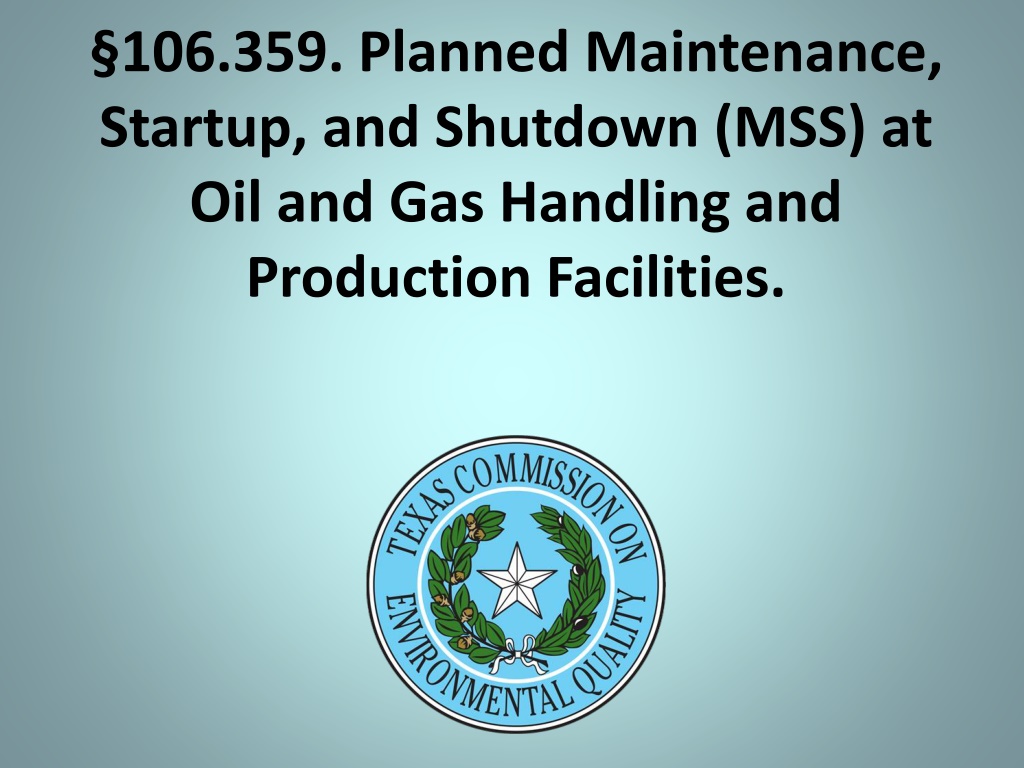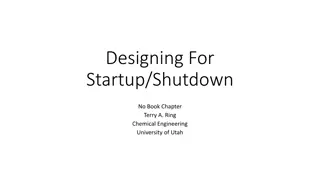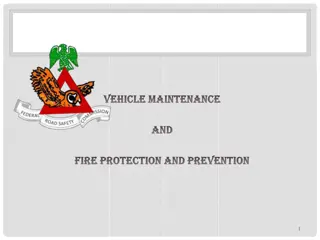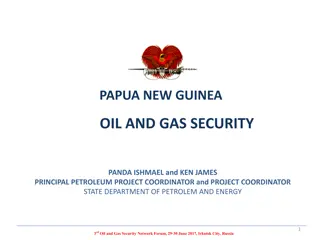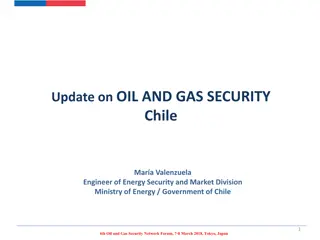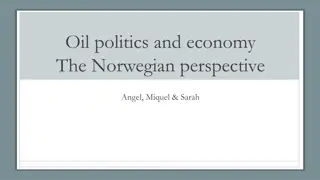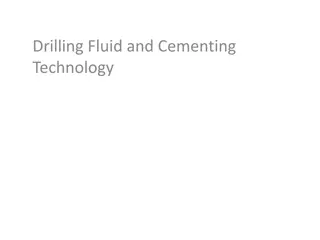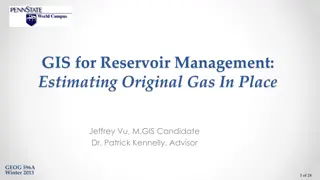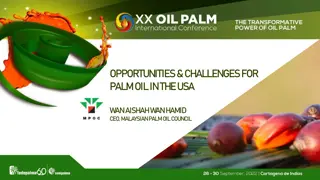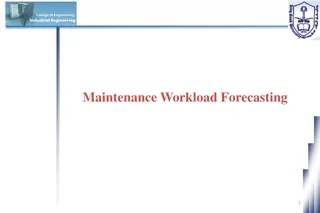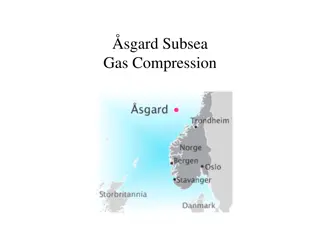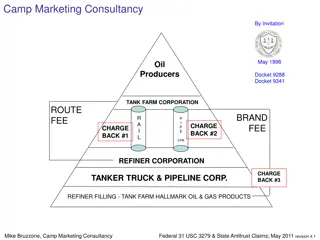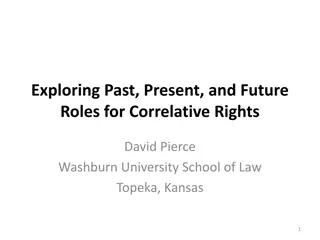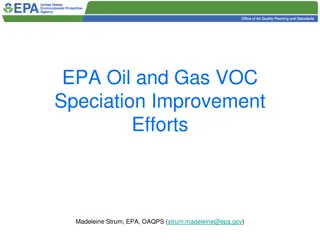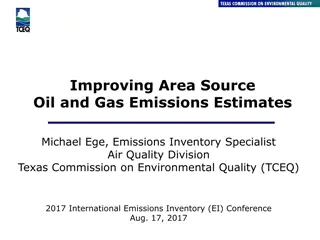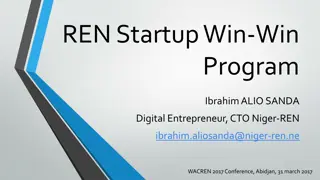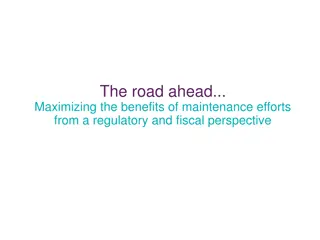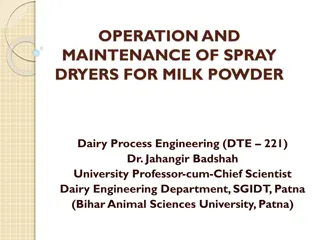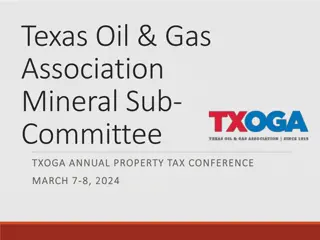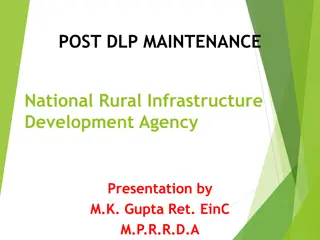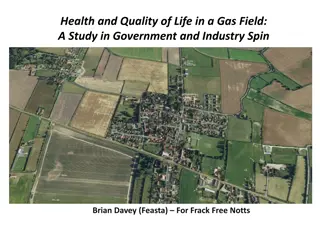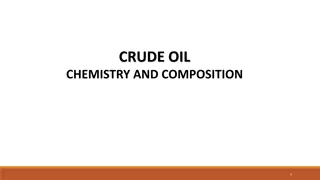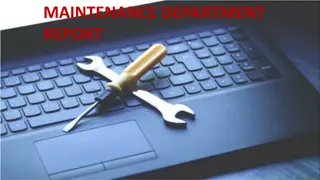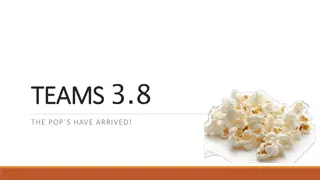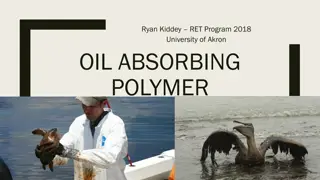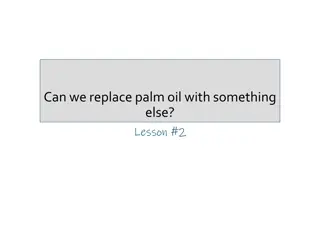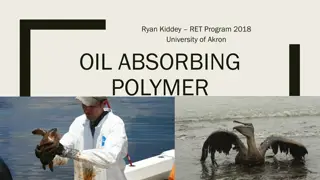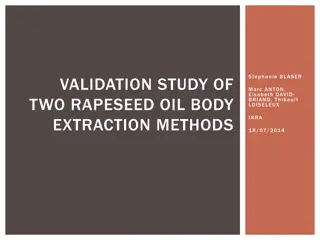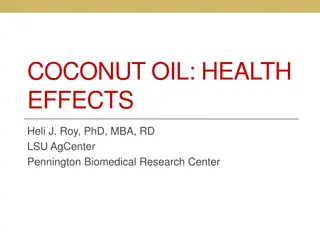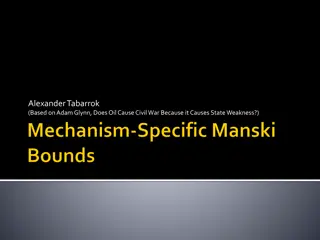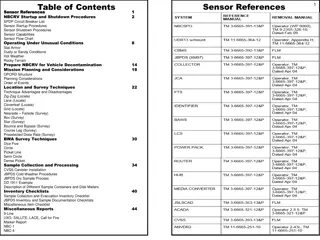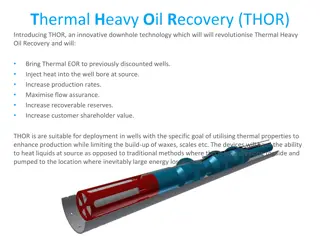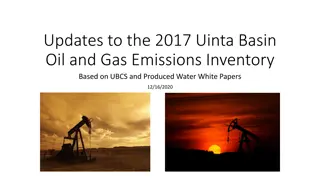Planned Maintenance, Startup, and Shutdown at Oil and Gas Facilities
Overview of Planned Maintenance, Startup, and Shutdown (PBR 106.359) activities at Oil and Gas Handling and Production Facilities. The schedule, authorization timeline, and options provided for MSS implementation. No superseding of existing authorizations; PBR activities do not require registration but emphasize best management practices and record-keeping.
Download Presentation

Please find below an Image/Link to download the presentation.
The content on the website is provided AS IS for your information and personal use only. It may not be sold, licensed, or shared on other websites without obtaining consent from the author. Download presentation by click this link. If you encounter any issues during the download, it is possible that the publisher has removed the file from their server.
E N D
Presentation Transcript
106.359. Planned Maintenance, Startup, and Shutdown (MSS) at Oil and Gas Handling and Production Facilities.
Overview MSS Schedule in 30 TAC 101.222(h) January 5, 2012 SB 1134 moved the deadline for Oil and Gas to January 5, 2014 Must meet 30 TAC 106.4
PBR 106.359 (1) engine, compressor, turbine, and other combustion facilities maintenance; (2) repair, adjustment, calibration, lubrication, and cleaning of site process equipment; (3) replacement of piping components, pneumatic controllers, boiler refractories, wet and dry seals, meters, instruments, analyzers, screens, and filters; (4) turbine or engine component swaps; (5) piping used to bypass a facility during maintenance; (6) planned MSS activities with the same character and quantity of emissions as those listed in paragraphs(1-5) of this subsection;
PBR 106.359 (7) pigging and purging of piping; (8) blowdowns; (9) emptying, purging, degassing, or refilling of process equipment, storage tanks and vessels (except landing floating roof tanks for convenience purposes), if subparagraphs (A) - (C) of this paragraph are met. (10) abrasive blasting, surface preparation, and surface coating of facilities and structures used at the site in oil and gas handling and production.
MSS PBR Timeline March 15-April 15, 2013 Comment Period July 26, 2013 Adoption September 10, 2013 Effective Date January 5, 2014 O&G Authorizes Planned MSS
106.352 (i)-Planned Maintenance, Startups and Shutdowns Options: Counties required to be registered under 106.352(a-k) must use (i) Counties voluntarily registered under 106.352(a-k) have an option to revise to 106.352 (l). Registering/Representing MSS-January 5, 2014
106.359-Planned MSS at O&G Handling & Production Facilities Applicability No superseding of existing authorization Planned MSS Activities PBR does not require registration Best management practices Keep records
106.359 Construction Authorizations (Title V, NSR, Standard Permit)
Title V 106.359 required for permit Minor revision OP-NOTIFY
NSR (New Source Review) 106.359 used to increase specific activities Activities must be in compliance with rules 106.359 may not be used to remove existing special conditions
Standard Permits 106.359 not incorporated 116.620 Referenced at renewal No hourly emission requirements
MSS Options-Barnett Shale 30 TAC 106.352(a)-(k) Authorized under 106.352(i) Painting and Blasting authorized under 106.263 Non-Rule Standard Permit Authorized under Section (i) Painting and Blasting authorized under 106.263
What is the difference between Scheduled Maintenance, Planned Maintenance, and Upsets?
Scheduled maintenance, startup, or shutdown activities are routine and predictable and are scheduled using time constraints. These activities should be included in the company s maintenance program.
Planned activities are routine and predictable, similar to scheduled maintenance, but planned maintenance is not necessarily scheduled for a specific date in the future. For example: The brake pads on the car will be changed when the thickness is less than 1/8 inch.
Planned maintenance can be performed on an accelerated timeframe when a facility is shut down due to an emissions event.
For example: Emission event causes the engine shut down. While engine is down, planned maintenance is performed. Emissions during maintenance and the subsequent startup of the facility may be claimed as planned maintenance. Emissions from the initial emission event that caused the engine shutdown cannot be claimed as planned maintenance
Unplanned and unavoidable This PBR does not authorize emissions associated with emissions events, malfunctions, upsets, unplanned startup, unplanned shutdown, or unplanned maintenance activities that require immediate corrective action.
Lily Site Compressor Sales Gas Gas VRU Flare Separator Crude Tank 1 Tank 2 Crude Pipeline
MSS Example 1 Gas to atmosphere Closed Compressor for Repairs Sales Gas Gas Best management practice would be to route the emissions to the flare as a control, if the control can handle the gas and if it can be routed to the flare. VRU Flare Separator Crude Tank 1 Tank 2 Crude Pipeline
MSS Example 2 Compressor Sales Gas Gas Closed for VRU Repairs Flare Gas Separator Crude Tank 1 Tank 2 Crude Pipeline
MSS Example 3 Compressor Sales Gas Gas VRU Flare Closed for Separator Crude Tank 1 Tank 2 Repairs Crude Pipeline
Summary Compressor Sales Gas Gas VRU Flare Separator Crude Tank 1 Tank 2 Crude Pipeline
Calculation of Emissions from MSS Activities at Oil & Gas Production Facilities
Calculation Programs TCEQ is aware of two programs that can do MSS emissions calculations. TCEQ Oil and Gas Emissions Calculations Spreadsheets Tanks ESP
MSS Default Values for Miscellaneous Activities Spreadsheet contains the default value of a total of 0.25 tons per year for all activities authorized by 106.359(b)(1)- 106.359(b)(6). No calculations necessary! The spreadsheet also allows more customized estimates of emissions for applicants choosing not to accept default values.
MSS Default Values for Miscellaneous Activities The emissions in activities (b)(1)-(b)(6) may seem small, but they do add up over time. All default values are conservative. Ex: (b)(1) Engine Oil changes / Filter changes. -Number of activities per year is 10 (Number of oil changes per engine per year) -Number of Engines is set at 10 -Allows for 100 oil changes per year
MSS Default Values for Miscellaneous Activities Customization of the default spreadsheet is possible. Ex: A Glycol Dehydration and Amine unit are not present. -Emissions not used for these Units can be used for other activities.
MSS Default Values for Miscellaneous Activities Best option? Use the default values. It is as easy as selecting Yes at the top of the Spreadsheet page. Can help with record keeping Equations located at the bottom of the spreadsheet page. MSS Default Values for Miscellaneous Activities
TCEQ Oil and Gas Emissions Calculations Spreadsheet Blowdowns MSS pigging MSS Floating Roof Tank Landing Losses MSS Tank Non Forced Ventilation Degassing MSS Tank Forced Ventilation Degassing http://www.tceq.texas.gov/assets/public/permitting/air/NewSourc eReview/oilgas/spreadsheet-revisions.pdf
Equations: Located on bottom of each Spreadsheet Blowdowns and MSS Pigging and Piping Components: -Emission estimates based on Ideal Gas Law PV=nRT. -VOC result = ((Pressure of Gas Inside the Unit Before Venting) * (Actual Volume of the Vented Unit)) / (Frequency of events) * (Molecular Weight) * VOC wt% Engine Oil change/Filter change Two components to Emissions: -Losses from emptying of oil into an open pan can be estimated using AP- 42 Loading Equation: LL= 12.46 T -Evaporation Losses from open pan: ?? = 4.14 10 5??0.78PV MW0.67 Ap0.94 t SPM Changing Solution in Glycol Dehydration Units and Amine Units -AP-42 Loading Equation:LL= 12.46 -AP-42 Clingage Loss Equation: LSL max = 0.60 (PVv / RT) Mv SPM T
Equations: Located on bottom of each Spreadsheet Changing Engine Rod Packings and Wet/Dry Seals and Heater Treaters: -Emissions result from the evaporation of the lubricant adhered to the rod packing and seal casings. -AP-42 clingage equation: LSL max = 0.60 (PVv / RT) Mv Aerosol Lubricants: Emissions from the use of aerosol lubricants such as WD-40 can be estimated by assuming that 50% of the contents of a 16 oz can are volatile hydrocarbons that will volatilize. Calibration: Emissions resulting from the use of calibration gases can be estimated by weighing the calibration gas cylinder every time it is used.
Painting and Sandblasting Air Permit Technical Guidance for Coatings Sources: Surface Coating Operations. Small Business and Local Government Assistance Surface Coating Facilities: Emissions Calculation Spreadsheet http://www.tceq.texas.gov/assistance/industry/sc/coating-emissions-calc.html TCEQ Technical Guidance : Abrasive Blast Cleaning Emissions from Aerosol Cans (paints, paint removers, rust inhibitors, etc.) Assume that 90% of the can contents evaporate
Where to Find More Information Air Permits Main Line : (512) 239-1250 airog@tceq.texas.gov www.texasoilandgashelp.org
